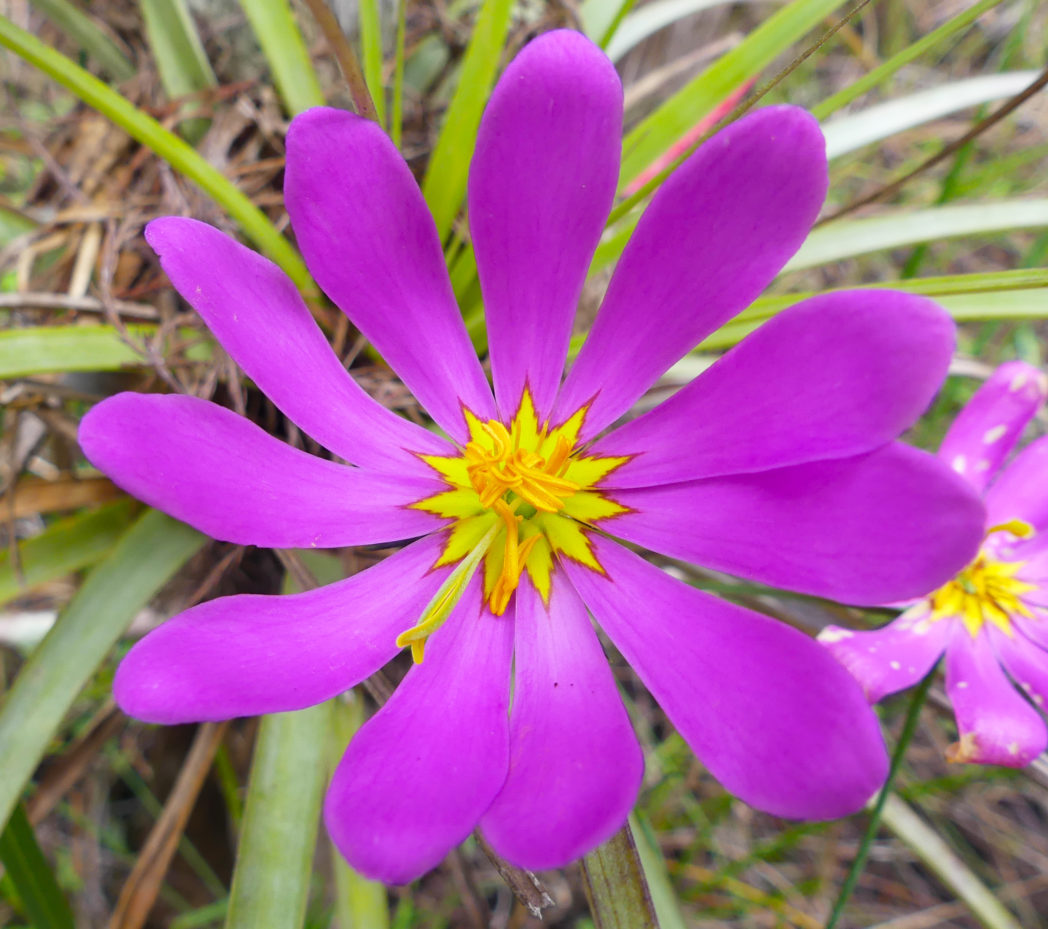Bartram’s rosegentian
Pictured above: Bartram’s rosegentian (Sabatia decandra) by Eleanor Dietrich. Click on terms for botanical definitions. View post as a PDF.
Bartram’s rosegentian (Sabatia decandra) is a dazzling pink wildflower found naturally in wet pinelands, freshwater marshes, pond margins and in wet ditches. It blooms late spring into late summer or early fall.

Its showy blooms are typically comprised of 10 bright-pink petals (although they can number between 8 and 14). The base of each petal is yellow with a red outline, which forms a starburst-like shape in the center of the bloom where they come together. The stigma is also yellow and prominent; it protrudes from an obvious green ovary. Stamens are orange and coiled. Basal leaves are oblong to spatulate and somewhat succulent. They emerge in spring, but disappear as the plant begins to bloom. Stem leaves are smaller (about 1”), linear and sessile with entire margins. They are oppositely arranged. Stems are branched.
The common name pays homage to William Bartram, an American naturalist and botanist who explored the southern U.S. in the mid- to late-1700s. The species epithet was originally bartramii, but was changed to decandra, referring to the flower’s (typical) 10 petals.
Family: Gentianaceae (Gentian family)
Native range: Nearly throughout
To see where natural populations of Bartram’s rosegentian have been vouchered, visit florida.plantatlas.usf.edu.
Hardiness: Zones 8A–10
Lifespan: Perennial (but has been known to act as an annual)
Soil: Moist to wet sandy soils
Exposure: Full sun
Growth habit: 1–3’ tall
Propagation: Seed (self-spreads by underground rhizomes)
Bartram’s rosegentian plants are not generally propagated for commercial sale. Visit a sunny wetland this summer to enjoy their spectacular blooms.
For more information on other Sabatia species, see these resources:

